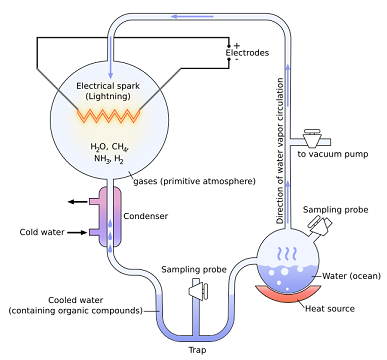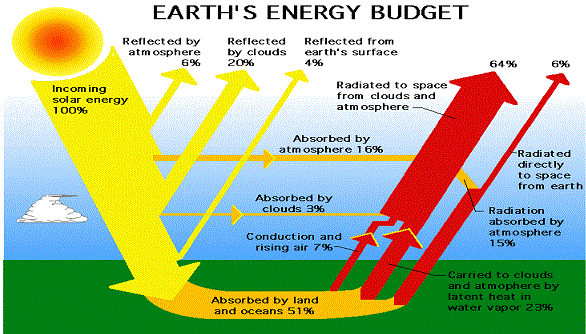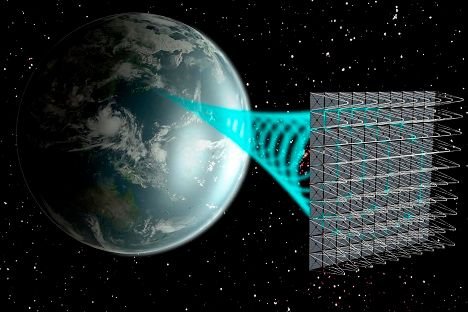A little recall: where it all started
Several theories have been formulated concerning the origin of life on earth including the theory of abiogenesis propounded by Aristotle. He believed that life arose spontaneously through his 'meat experiment'.. Thanks to Lazzaro Spallanzani and Franscesco Redi, probably we would still be holding on to that theory up till today. There was no general consensus concerning the appearance of first cell until Alexander Oparin came with the chemosynthetic theory of origin of life. It is believed the atmosphere surrounding the primitive earth was hot and made up of water vapour and gases like ammonia, methane and hydrogen molecules. Hot water bodies were formed as a result of solidification of the hot material and the rain that follows it. Some of the components of the atmosphere dissolved into the water bodies and eventually reacted to form the first simple biomolecules of life. The reaction was driven by heat and ultraviolet rays from the sun. Continous reaction among the simple biomolecules led to formation of complex molecules know as 'coercervate droplets'. Changes within the complex aggregates eventually led to the formation of the first heterotrophic cell evolution of which led to the emergence of first autotrophic cell due to formation of chlorophyll. What led to the general acceptance of the theory was the work of Stanley Miller and Harold Urey who simulated the conditions that existed in primitive earth and were able to synthesize simple biomolecules by it.
The earth as a system
The earth operates as a system of interrelated parts consisting of hydrosphere, lithosphere, stratosphere and biosphere with the latter being a term used to describe all portions of the planet that supports life, be it plant, animal, fungi, protists or bacteria. Energy and materials cycle withing these interrelated parts but while energy can enter and leaves, materials cannot. This type of system is called 'closed' system in thermodynamics. The similitude of the earth and the sun is like a water containing beaker, tightly closed to the extent that nothing can escape or enters and placed on a heat source. If the heat source stops for a while, the water will loose energy to its surroundings and cool down until the heating resumes. The only source of energy to the earth's system is the sun, if the sun rays stop reaching the earth for some time, the energy within the system will circulate and eventually escape into the surroundings. This will lead to death of all physical and biological activities within the system of the earth.
The sun powers the earth and everything within it.
Energy from the sun comes in form of sunlight which is made up of different electromagnetic waves. It takes about 8.3 minutes to reach Earth from the surface of the Sun. The powerful radiations are generated by continous nuclear reaction going on within the sun. The surface temperature of the sun is about 600K the implication of which only visible and ultraviolet radiation leave the sun surface. These radiations are absorbed and re-emitted at various stages of their journey. About 20% of the incoming rays from the surface of the sun is reflected back by the cloud, 6% reflected back by the atmosphere and 4% by the earth's surface itself. Out of the remainder, 3% is absorbed by the cloud, 16% by the atmosphere and about 51% is absorbed by land and oceans. The solar radiation travels round about 93 million miles while dispersing in all directions, at the end of the day, only a tiny fraction of the energy from the sun is intercepted by the earth itself. This little fraction powers the earth and everything within it including warming and sustaining biological life.
How the sun powers biological life: photosynthesis
The sun is the only source of energy for almost all biological life. Without energy, there can not be any life. Even the formation of simple biomolecules where the first cell evolved required energy in from of ultraviolet rays from the sun. The channel through which energy from the sun enters the biological chain is photosynthesis. This is the process whereby solar energy from the sun is converted into chemical energy in plant (primary producer) through various processes ranging from light dependent reaction and Benson-Calvin pathway. Solar energy from the sun is then locked up in the primary product of photosynthesis (glucose). Energy locked in the primary producer is then released into whosoever consumes it (primary consumer) by various processes of respiration and the food chain continues with energy moving from one trophic level to another.
In summary
All biological processes require energy in form of adenosine triphosphate. It is the energy currency of all cells. Without cells, there cannot be life. Energy from the sun is converted to chemical energy in form of ATP through the chlorophyll of green plants (producers). Without the sun, there will not be energy on the planet let alone life.
Please feel free to contribute, I am always in the mood to learn :)




